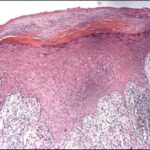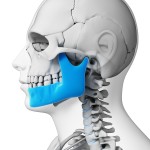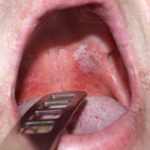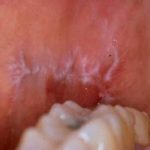
This review of the global prevalence of oral lichen planus (OLP) included 66 observational studies providing an estimate of prevalence of 1.01% (0.74 to 1.32%).
[read the full story...]
This review of the global prevalence of oral lichen planus (OLP) included 66 observational studies providing an estimate of prevalence of 1.01% (0.74 to 1.32%).
[read the full story...]
This review of botulinum toxin (BTX) in the management of temporomandibular joint disorders (TMD) included 7 small RCTs of low quality. high quality well reported RCTs with larger sample sizes and longer follow times are needed to properly assess the effectiveness of BTX in the management of TMD.
[read the full story...]
This network meta-analysis of the efficacy of antifungal drugs on oral candidiasis included 31 RCTs of overal low quality suggesting that fluconazole may be the most effective.
[read the full story...]
This review of the rate of malignant transformation of oral leukoplakia included 34 many retrospective observational studies. The estimated mean malignant transformation rate was 9.7% (95%CI; 7.8% to 11.7%).
[read the full story...]
This review of the the efficacy of probiotics on oral Candida spp. includes 12 RCTs and suggests a possible benefit. However the quality of the evidence is limited so the findings should be intepreted cautiously.
[read the full story...]
This review of the malignant transformation rate of oral lichen planus and associated risk factors included 33 studies. Using a strict definition the authors found a malignant transformation rate of 0.44%.
[read the full story...]
This Cochrane review of the efficacy and safety of corticosteroids for the treatment of people with oral lichen planus(OLP) included 35 RCTs suggesting that they may be more effective than placebo for reducing the pain of symptomatic OLP but the reliability of the finding is low.
[read the full story...]
This new guideline from the American Dental Association is about the the appropriate use of systemic antibiotics for the urgent management of symptomatic irreversible pulpitis with or without symptomatic apical pulpitis, pulp necrosis and symptomatic apical periodontitis and pulp necrosis and localized acute apical abscess.
[read the full story...]
This review of a possible association between vitamin D deficiency and recurrent aphthous stomatitis (RAS) included 5 case control studies providing limited evidence that low levels of serum vitamin D might be a risk factor for RAS.
[read the full story...]
This review comparing the efficacy of Cox-2 inhibitors with ibuprofen after third molar removal included 12 RCTs suggesting that COX-2 inhibotors and Ibuprofen provide similar pain relief at 6, 8, and 12 h after third molar removal.
[read the full story...]